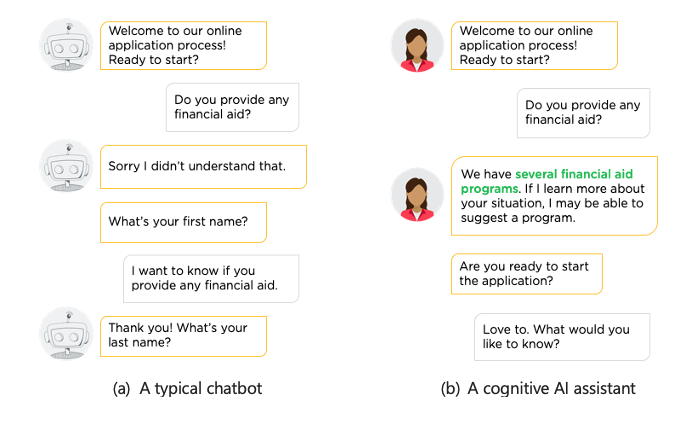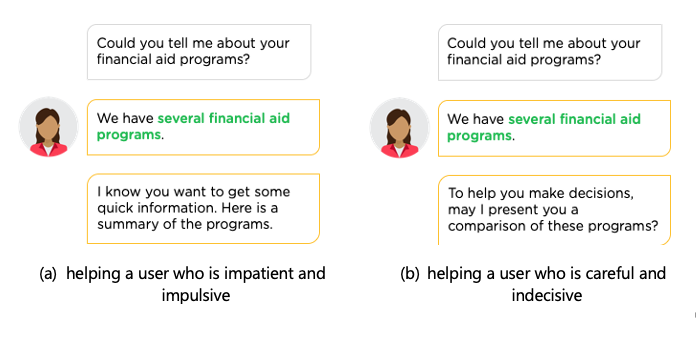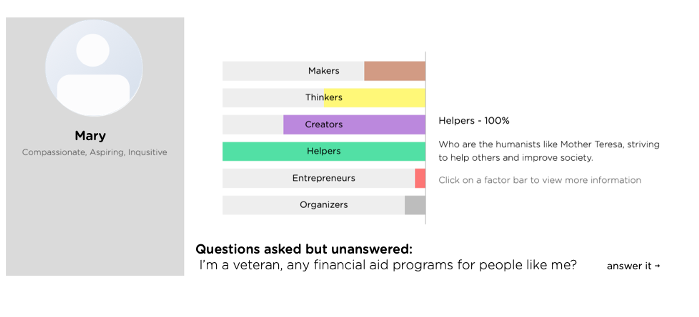
Higher education must cut through the clutter and create connections with potential students, and continue to build the relationships even after those students are part of their university environment.
One solution for achieving this goal is for universities to incorporate chatbots as part of their admissions teams and extend their workforce.
However, many universities find typical chatbot solutions are often inadequate, leaving their users frustrated with an impersonal experience.
The personal connection becomes lost with chatbots ignoring user inquiries, offering irrelevant or often, one-size-fits-all responses.
More from UB: Machine learning makes big move to UT Austin
Herein lies the challenge—can a chatbot automate human conversation AND be personal?
Today, a new generation of chatbots—called cognitive AI assistants—can do just that. Additionally, organizations can launch them in a matter of days vs. months.
The incorporation of cognitive intelligence into a chatbot immediately transforms users’ experience. Instead of being forced to follow a fixed interaction path (e.g., clicking on menu buttons one after another), a user is now interacting with a chatbot that has a more human-like quality, and that can learn, remember, reason, solve problems and make sound judgements.
A cognitive AI assistant has three four attributes that universities should look for:
Responsible AI
When universities evaluate a chatbot solution, it is important to verify whether such a chatbot is adequately responsible to complete its assigned tasks, and whether it is meant to help prospective students obtain program information or help existing students access course information.
A responsible AI assistant can truly help universities help their prospective and existing students, 24/7/365.
Below shows two conversations. On the left, it is a typical chatbot that can hardly understand how to help users, while the chatbot on the right is a cognitive AI assistant that answers a user’s question promptly and maintains the conversation context to ensure task completion:

Empathetic AI
In addition to evaluating a chatbot’s abilities to accomplish tasks, when universities evaluate a chatbot solution, it is also important to verify whether such a chatbot can help their brand build empathetic and deep personal relationships with their prospective and existing students.
Due to a lack of intelligence, a typical chatbot cannot infer users’ characteristics. That’s why a typical chatbot often gives a one-size-fits-all, impersonal response regardless of individuals’ needs and wants.
In contrast, a cognitive AI assistant can read between the lines during a conversation and automatically infer a user’s unique interests and preferences.
By discovering someone’s “internal state” from the conversational text, a cognitive AI assistant enables universities to deeply understand and better help their students and create deeply personal connections in real time.
Below shows how a cognitive AI assistant personalizes its guidance to two different users based on its understanding of the users’ characteristics:

Real-time AI facilitates human-chatbot collaboration
Since no artificial intelligence is perfect, universities must evaluate how a chatbot would work with their human teams, who must monitor and update the chatbot from time to time. This is also because universities not only want a chatbot to be an extension of their brand but also a valued member of the team to elevate the overall work environment.
Unlike a typical chatbot that is often unaware of user-chatbot interaction situations, a cognitive AI assistant can work collaboratively with its human teammates, informing the teammates about its own status and suggesting ways to improve itself.
Using such information, the human teammates can improve a cognitive AI assistant instantly without interrupting any ongoing conversations.
The following example shows how a cognitive AI assistant informs its human teammates about its inference of a user (Mary) and her unanswered question. Given such information, the human teammates can address the unanswered question while using the information to improve the AI immediately.

Cost and Speed of Deployment
No university has unlimited resources and adopting an AI solution, especially a solution as powerful as a cognitive AI assistant, can be very costly. When universities evaluate a chatbot solution, it is also important for them to evaluate the cost of incorporating such an AI assistant into the “team.”
There are normally two types of cost involved in implementing such a solution: human resource and time required. Historically, it would take months to set up and deploy such a solution but new advances in AI enable rapid setup and deployment, in a matter of days.
Moreover, it is important to ask what kind of human resource would be required to implement a cognitive AI assistant solution? Will it require AI expertise to set one up? Will there be a need for dedicated IT support? Who will build the situational experiences into the chatbot?
Finding a solution that does not require a dedicated IT resource or technical staff is vital for the quick launch of a cognitive AI assistant.
Solutions that have rich, pre-built AI capabilities (e.g., AI templates or AI training tools) will cut the implementation time tremendously. In turn, they allow universities to start taking advantage of a cognitive AI assistant faster and perform ongoing maintenance with little effort.
Michelle Zhou is one of the world’s top experts in human-centered AI, an inventor of the IBM Watson Personality Insights and the current editor-in-chief of ACM Transactions on Interactive Intelligent Systems. Since 2014, Zhou has been building Juji, an AI company specialized in powering and democratizing a new generation of chatbots—cognitive AI Assistants.

